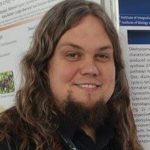Lien vers Pubmed [PMID] – 32817093
Lien DOI – 10.1128/JB.00461-20
J Bacteriol 2020 Oct; 202(21):
The Negativicutes are a clade of the Firmicutes that have retained the ancestral diderm character and possess an outer membrane. One of the best studied Negativicutes, Veillonella parvula, is an anaerobic commensal and opportunistic pathogen inhabiting complex human microbial communities, including the gut and the dental plaque microbiota. Whereas the adhesion and biofilm capacities of V. parvula are expected to be crucial for its maintenance and development in these environments, studies of V. parvula adhesion have been hindered by the lack of efficient genetic tools to perform functional analyses in this bacterium. Here, we took advantage of a recently described naturally transformable V. parvula isolate, SKV38, and adapted tools developed for the closely related Clostridia spp. to perform random transposon and targeted mutagenesis to identify V. parvula genes involved in biofilm formation. We show that type V secreted autotransporters, typically found in diderm bacteria, are the main determinants of V. parvula autoaggregation and biofilm formation and compete with each other for binding either to cells or to surfaces, with strong consequences for V. parvula biofilm formation capacity. The identified trimeric autotransporters have an original structure compared to classical autotransporters identified in Proteobacteria, with an additional C-terminal domain. We also show that inactivation of the gene coding for a poorly characterized metal-dependent phosphohydrolase HD domain protein conserved in the Firmicutes and their closely related diderm phyla inhibits autotransporter-mediated biofilm formation. This study paves the way for further molecular characterization of V. parvula interactions with other bacteria and the host within complex microbiota environments.IMPORTANCEVeillonella parvula is an anaerobic commensal and opportunistic pathogen whose ability to adhere to surfaces or other bacteria and form biofilms is critical for it to inhabit complex human microbial communities such as the gut and oral microbiota. Although the adhesive capacity of V. parvula has been previously described, very little is known about the underlying molecular mechanisms due to a lack of genetically amenable Veillonella strains. In this study, we took advantage of a naturally transformable V. parvula isolate and newly adapted genetic tools to identify surface-exposed adhesins called autotransporters as the main molecular determinants of adhesion in this bacterium. This work therefore provides new insights on an important aspect of the V. parvula lifestyle, opening new possibilities for mechanistic studies of the contribution of biofilm formation to the biology of this major commensal of the oral-digestive tract.








